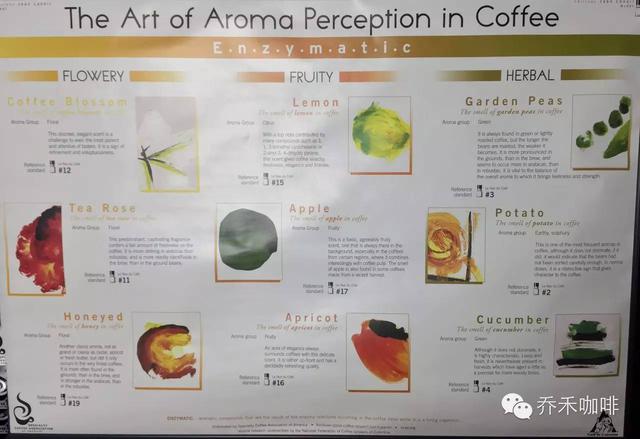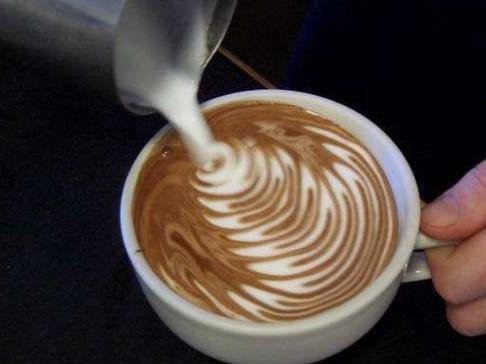All the correct classification of espresso tasting the soul of Espresso
I have talked about a variety of coffee brewing methods: ☞ American machine, siphon kettle, French presser, hand brewing machine, Italian machine, mocha pot. Which is better? According to the survey at the end of the article, I found that people still like the way of making espresso, so I had to give in. Let's talk about espresso drinks.
The warning is striking: I personally despise artificial flavors, so here we don't talk about caramel macchiato, caramel lattes, pumpkin cinnamon lattes.
So what exactly is the espresso we're going to talk about today?
Espresso = a times concentrated + b times water + c times milk
(coefficients b and c can be zero)
Espresso is the soul of espresso.
◊ espresso, the soul of Italian ◊
Before we talk about classification, let's talk about espresso. The birth of an espresso requires four important factors: coffee beans, espresso machines, bean grinders, and baristas.
[coffee beans]
Raw materials, for a dish, a drink, is always the most important. In Italy, blended coffee beans are traditionally used, so people follow suit. Beans used to make espresso all over the world are also blended, and coffee beans are roasted deeper (or even deeper).
[Italian coffee maker]
Just keep an eye on how many boilers. Then the brands recommended by Mr. Cha are as follows: Lamarzocco, NUOVA SIMONELLI, Synesso, Arduino Victoria.
[bean grinder]
This thing is too important. At present, only NuovaSimonelly Mythos one and EK43 can get in my eyes.
[barista]
The last factor is the barista. Baristas need to measure the amount of powder, decide how much coffee to grind, determine how much coffee to extract, extract time, keep the bar clean, communicate kindly with customers, always maintain a fascinating smile, and have six-pack abs. Can it be easy?
The above factors are all for making espresso, the essence of espresso.
Concentration is one of the few beverages in the world consisting of solid, gas, and liquid phases. Solids and liquids are the liquids that we see dark brown underneath, while gases are the layers of crema that float above the liquids.
Crema is not grease, but polymer produced by melalloidin (millard reaction). You want to know what millard reaction is? Please make your own Wikipedia (I think this should be summarized a little bit) and because of the pressure difference (the difference between the inside and outside of the powder bowl is 8 atmosphere), the deeper the baking, the more carbon dioxide and melalloidin, so the more crema. The less fresh the beans are, the less carbon dioxide is, so the freshness of beans can be judged to some extent by the thickness of crema. Generally speaking, the fresher the beans, the more Crema?
◊ 's common espresso forms ◊.
Next, let's talk about the most common types of espresso.
< 黑系列 >[Espresso]
In traditional Italian practice, a single serving of coffee powder is used to extract 1oz (about 28.35ml) espresso in about 25 seconds, while 14g coffee powder is used in double concentration, and 2oz espresso is extracted in about 25 seconds.
However, when we use boutique coffee, we will use more powder because we want to present a richer flavor of origin. So, we usually use 18 to 20 grams of coffee powder, about 25 seconds to extract twice the weight of espresso, that is, about 40 grams of espresso.
[Ristretto]
Literally, ristretto means limited, so ristretto is actually an espresso that limits the flow rate, which means that the flow rate of ristretto will be slower.
For example, if espresso uses 18g espresso to extract 36g espresso in about 25 seconds, then ristretto uses 18g powder and 18g espresso in about 25 seconds, so ristretto will be very strong.
[Lungo]
"Lungo'" means "long" in Italian. It takes longer to extract than Espresso, and eventually takes out coffee that weighs five times the weight of coffee powder. At this time, it cannot be called espresso because its concentration is relatively low.
[Americano]
The Chinese translation is easy to be confused. American drip filter / American hand-brewed coffee is called American coffee; espresso + water is also called American coffee, but the practice and flavor of the two are very different. It is said that americano's invention was due to the fact that during World War II, the American captain who went to Europe was not used to Italian espresso, so he would add water to the espresso, diluting it to the concentration of American coffee that the captain usually drinks in his hometown.
< 奶咖系列 >[Macchiato]
The real Macchiato is espresso with a drop of milk foam. Don't you think the caramel macchiato Caramel Macchiato is very large? I can only say that Starbucks is very. Great sorrow.
[Con Panna]
Espresso with whipped cream.
[Cappuccino (traditional/latte art)]
The correct size of a cappuccino is 150~180ml.
The traditional cappuccino (the monk's hat cappuccino) is an espresso served with steamed milk. The foam will be thicker and spread on the coffee, which will challenge the surface tension to protrude the rim of the cup. The thickness of the foam will be about 2cm, accounting for about 2530% of a cup of coffee.
Modern cappuccinos, on the other hand, will be concentrated, plus steamed milk, which accounts for about 20% of a cup of coffee.
You say that all the books say that the proportion of espresso, milk and milk bubbles in cappuccinos is 1pm, 3pm, 3pm, 1max, 1pm, 3pm, 1max, 1pm, 3pm, 1max, 1max, 1max, 1max, 1max, 1max, 1max, 1max, 1max, 1max, 1max, 1max, 1max, 1max, 1max, 1pm, 3pm, 1pm, 3pm, 3pm, 1pm, 3pm, 3pm, 3pm, 3pm, 3pm, 3pm, 3pm, 1pm, 3pm, 3pm, 3pm, 3pm, 3pm, 3pm, 3pm, etc. Do the math for yourself. For espresso 30ml, a cappuccino is 90ml. Have you ever had a cappuccino of this size? Please let me know if you have any. If not, please put those books on the feet of the table or burn them to keep warm.
[Flat White]
Ha ha, this is not Fu Ruibai. Once again, Starbucks shows its ability to confuse right and wrong! We must set up another chapter to correct the audio-visual experience! Please wait for it.
[Caffe Latte]
Espresso with lots of milk, lots of... So, are you drinking milk or coffee?
◊ coffee taste intensity ◊
So,
To sum up, the flavor intensity of the various coffees mentioned above is as follows:
Black series: Ristretto > Espresso > Lungo > Americano
Milk series: Macchiato > Con Panna > Flat White > Cappuccino > Caffe Latte
Source: Jinri Toutiao
Important Notice :
前街咖啡 FrontStreet Coffee has moved to new addredd:
FrontStreet Coffee Address: 315,Donghua East Road,GuangZhou
Tel:020 38364473
- Prev

Explain the taste of 36 flavor bottles of coffee and challenge your taste buds.
The coffee nose was divided into four groups with 9 branches in each group. Enzymatic (enzymatic group) (fruit): lemon Lemon, apple Apple, apricot Apricot (vegetable): potato Potato, cucumber Cucumber, pea GardenPeas (nectar): coffee flower Coffee Blossom, perfume rose TeaRose, honey Honeyed Sugar Browning (caramel group) (four nuts): roasted
- Next

The origin of coffee flower how to make a cup of coffee flower better?
In fact, there is no very clear literature on the origin of coffee flower. Coffee flower only knows that in Europe and the United States at that time, coffee flower was the difficult professional technology displayed during the coffee show. Such innovative skills, the difficult technology shown, greatly shocked the coffee industry at that time, and was well received by the public from the very beginning.
Related
- What is the meaning of lactic acid fermentation with coffee bean treatment?
- How to judge the state of foam by sound?
- How does the latte pull out the unicorn pattern? Come to get for a little trick to improve the flower pull!
- Will flower pulling affect the taste of the latte?
- Do you know the history of coffee?
- The difference between honey treatment and sun washing what is raisin honey treatment?
- What kind of milk can a novice use to make coffee foam to keep the foam longer? The correct method and skills of milking tutorial sharing
- Why do washed coffee beans taste sour? Flavor characteristics of washed Coffee
- Introduction to the skill of how to practice the size and height of water injection around the circle of hand-brewed coffee
- How do beginners practice coffee flower drawing from scratch?

